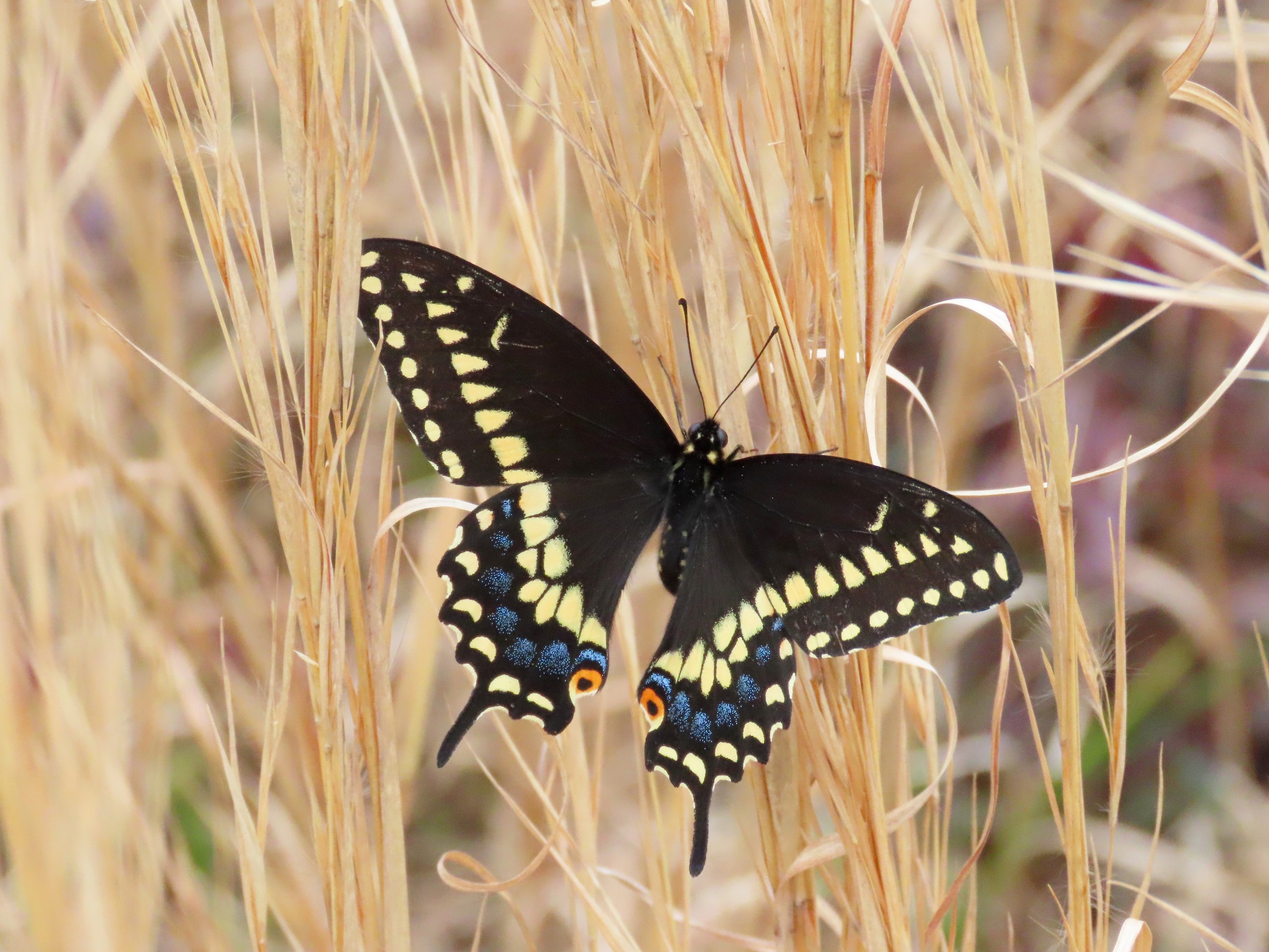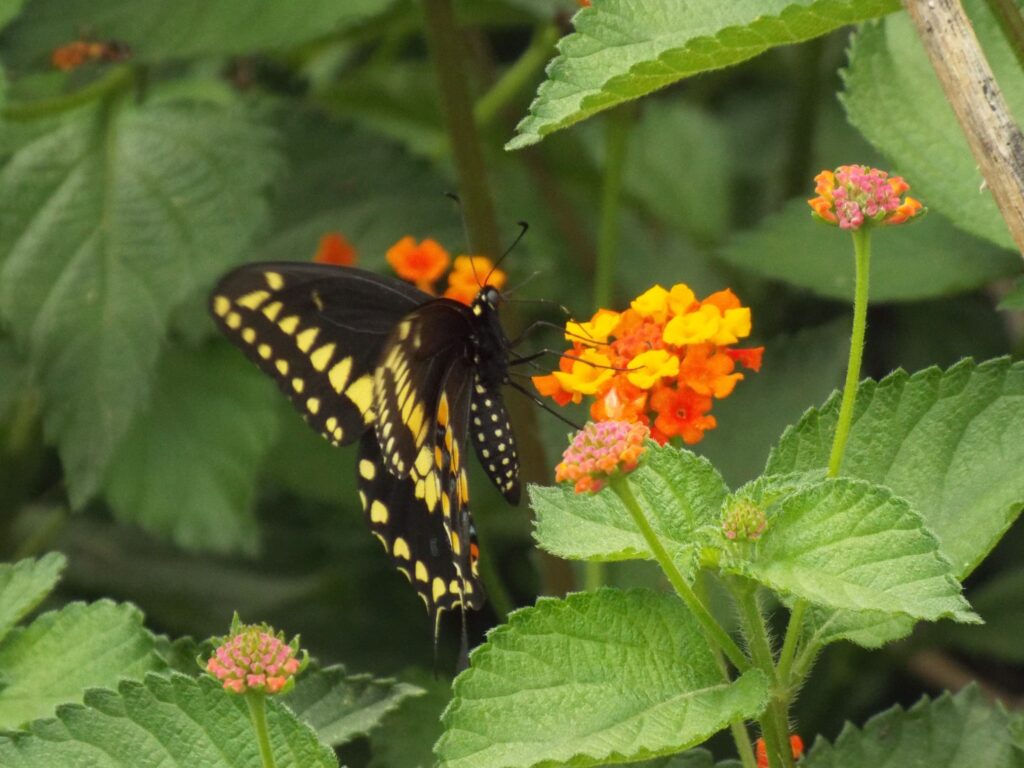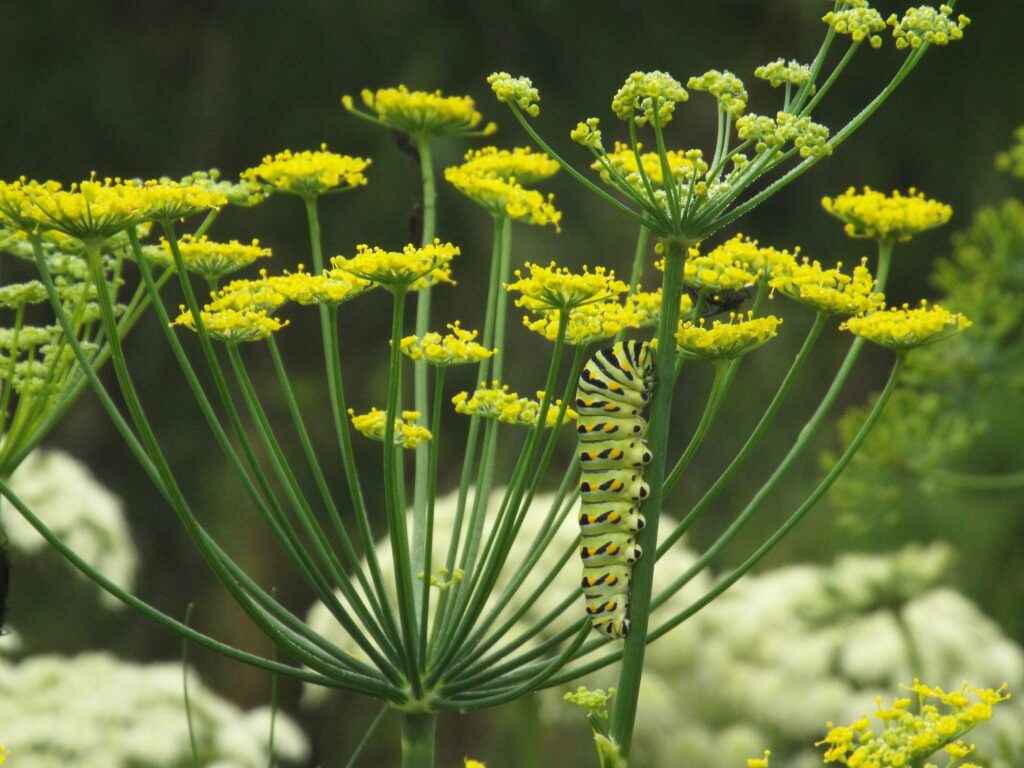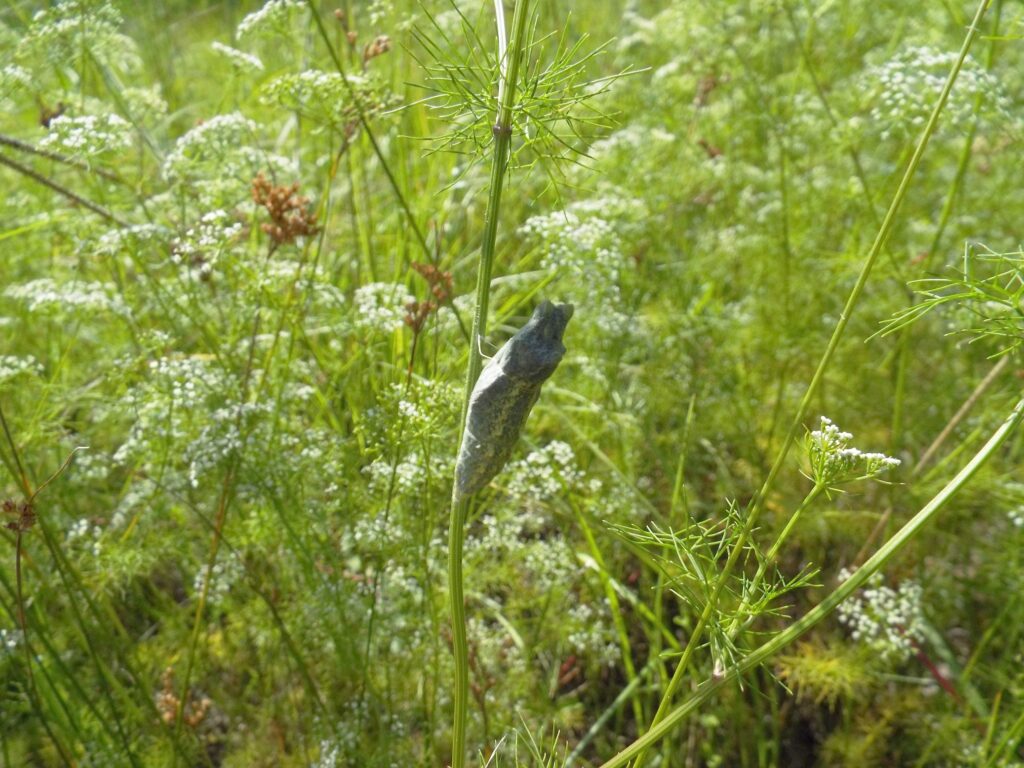



This week for Flora and Fauna Friday we have everybody’s favorite garden butterfly, the Black Swallowtail (Papilio polyxenes).
The Black Swallowtail is our smallest Swallowtail and the most numerous one in spring. As the weather warms their numbers dwindle before they all but disappear until the following year. They fly low and quickly through meadows, fields, and lawns. Their wings and bodies are mostly coal black. Males flaunt two tightly packed rows of silver-yellow spots down the borders of their wings. A feature accented with a brushing of iridescent sky-blue sandwiched between row on the hindwings and a pair of orange eyespots staring out from the inside corners. Females are more subdued with their rows of spots far reduced, replaced by a wave of cyan gloss across the lower hindwings. Both sexes have bodies lined in strings of pastel-yellow polka dots.
Black Swallowtails are a favorite of elementary school science classes and back porch terrariums. That’s because they lay their eggs on several common species of herbs and vegetables. This makes them a common site in vegetable gardens and means they’re easy to care for in captivity. In the garden their black-banded, yellow-dotted, granny-smith-green, corrugated caterpillars voraciously munch away at Carrots, Parsnips, Parsley, Fennel, Celery, and Dill. In the wild they eat species including Marsh Parsley, American Wild Carrot, Spotted Waterhemlock, and Mock Bishopweed. When harassed, the caterpillars will extend a forked, foul-smelling appendage from their forehead and try to rub it on the attacker. This set of tangerine antlers are called osmeterium and they’re a fairly effective defense against predatory insects. However, they don’t do much to ward off curious schoolchildren. When the caterpillars have plumped up and eaten their fill, they’ll leave their buffet to find a shady spot to nap for a few months. Here they transform into a pupa. They will either emerge within a few months or wait for more than half a year to appear at the tail end of the following winter.